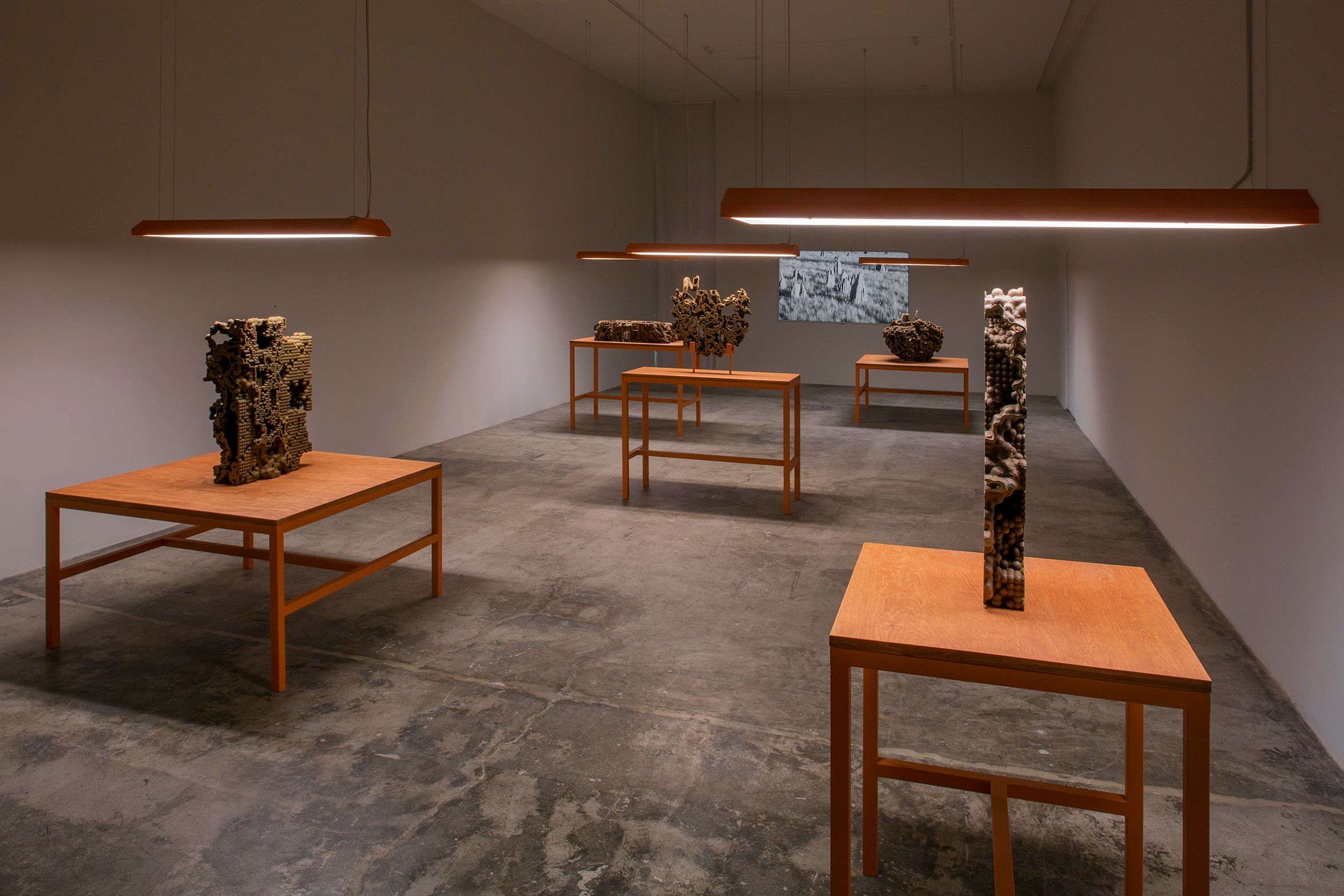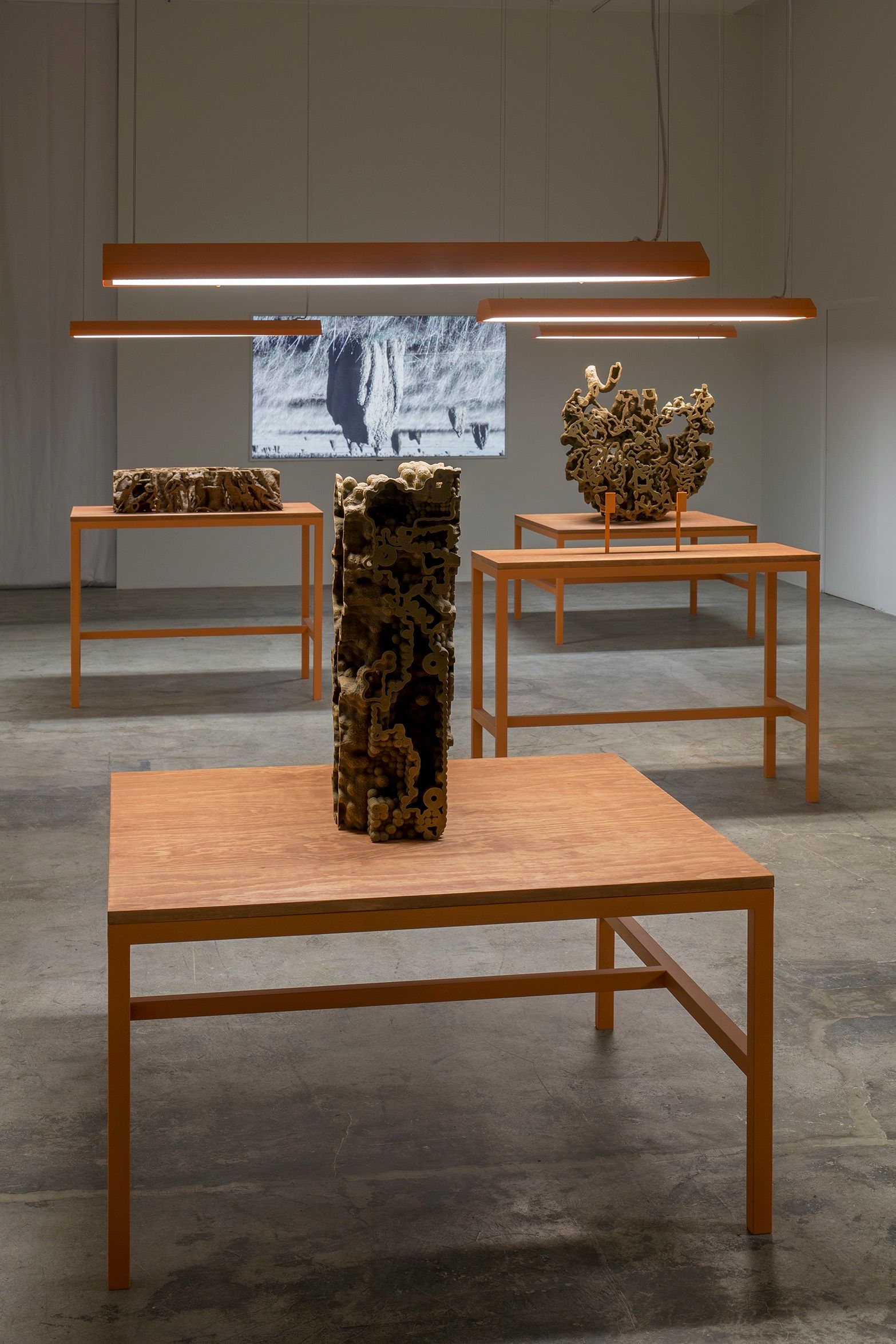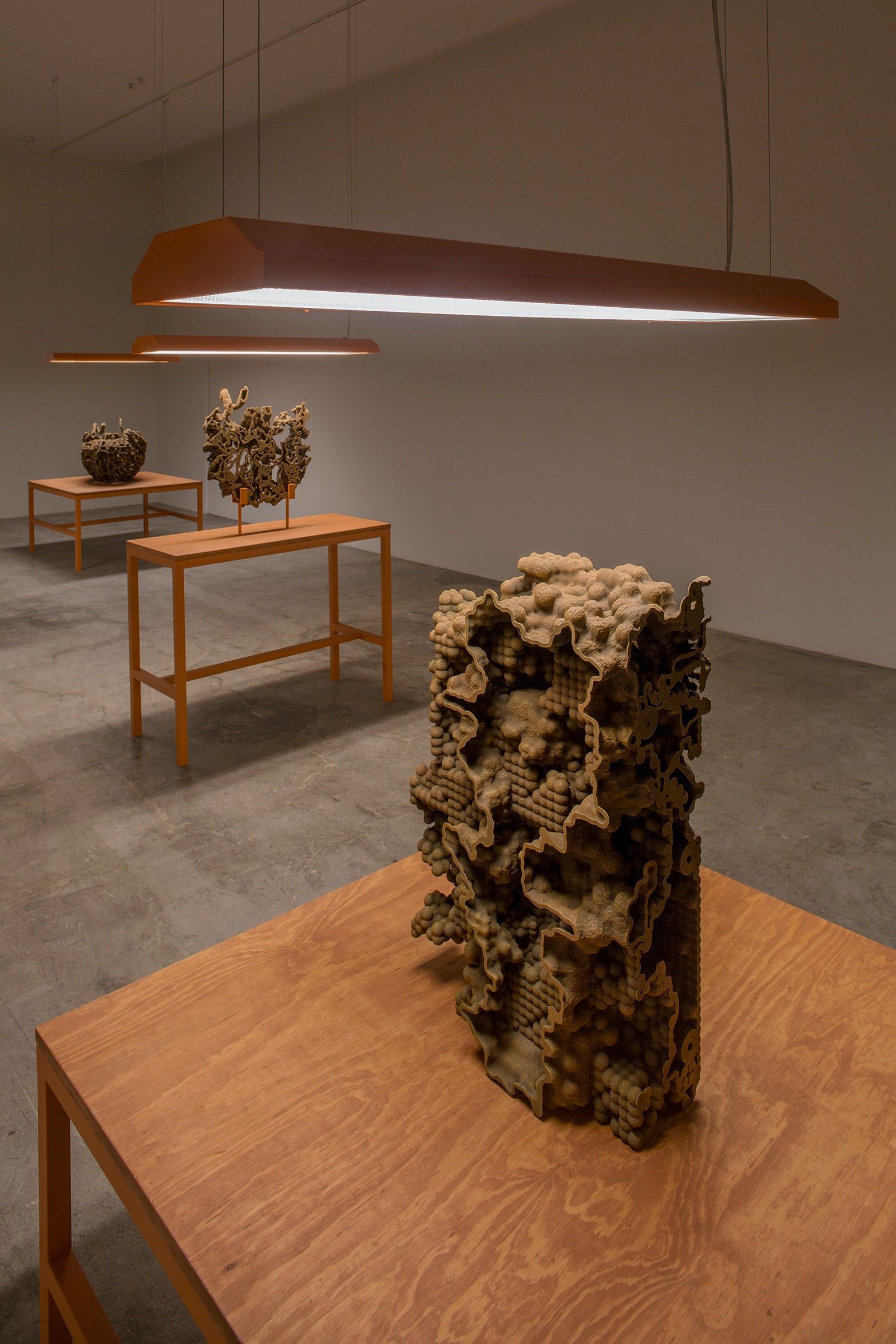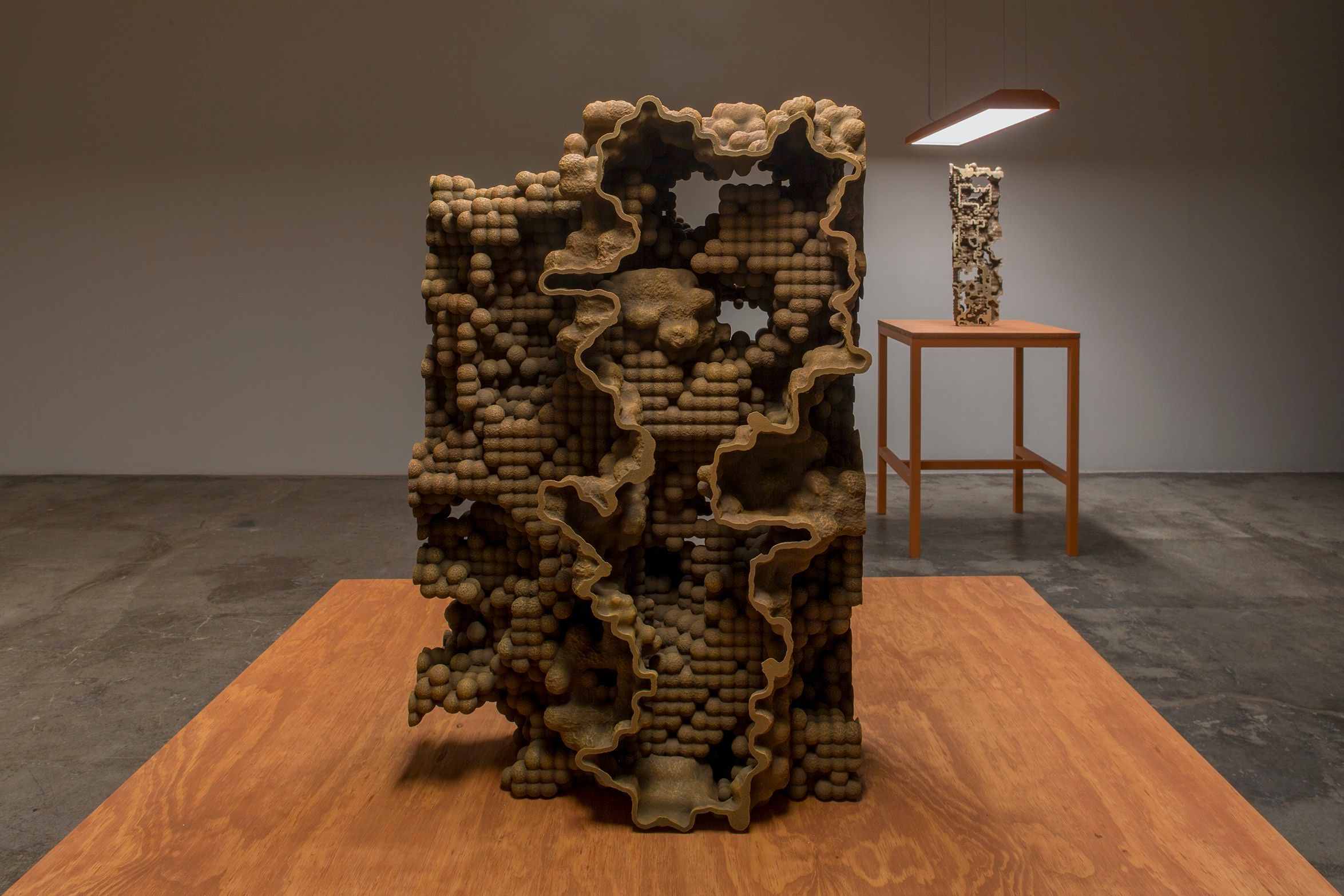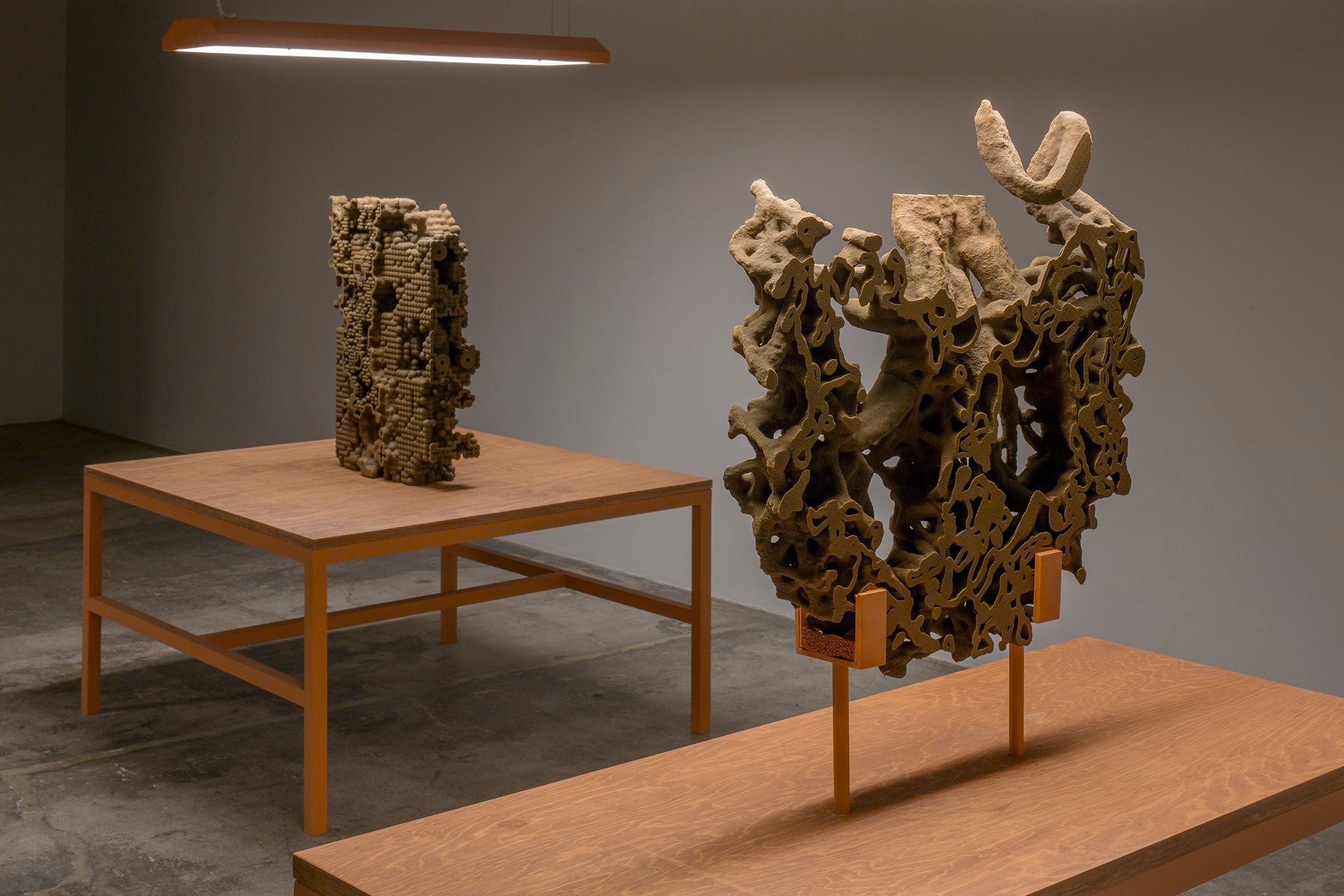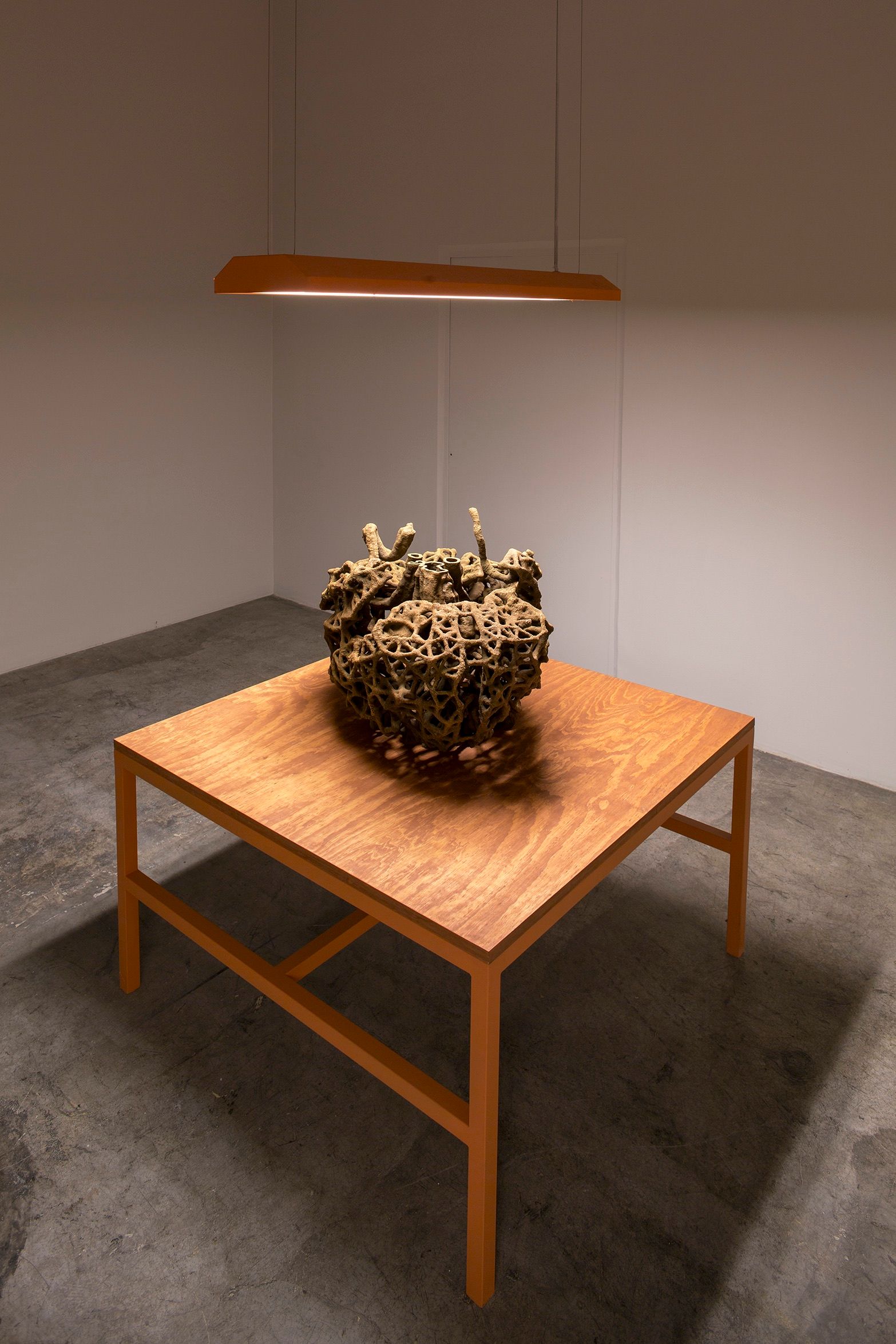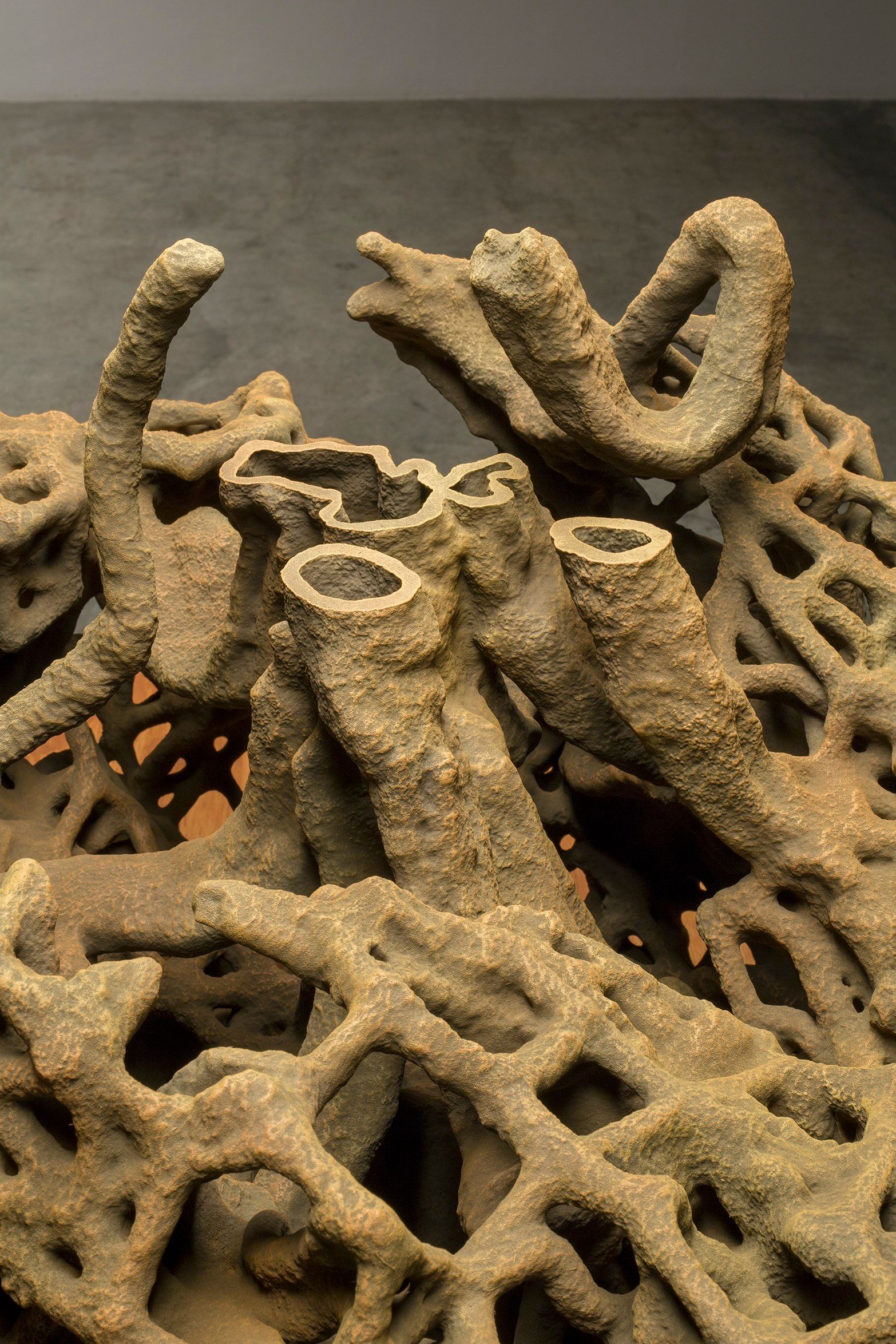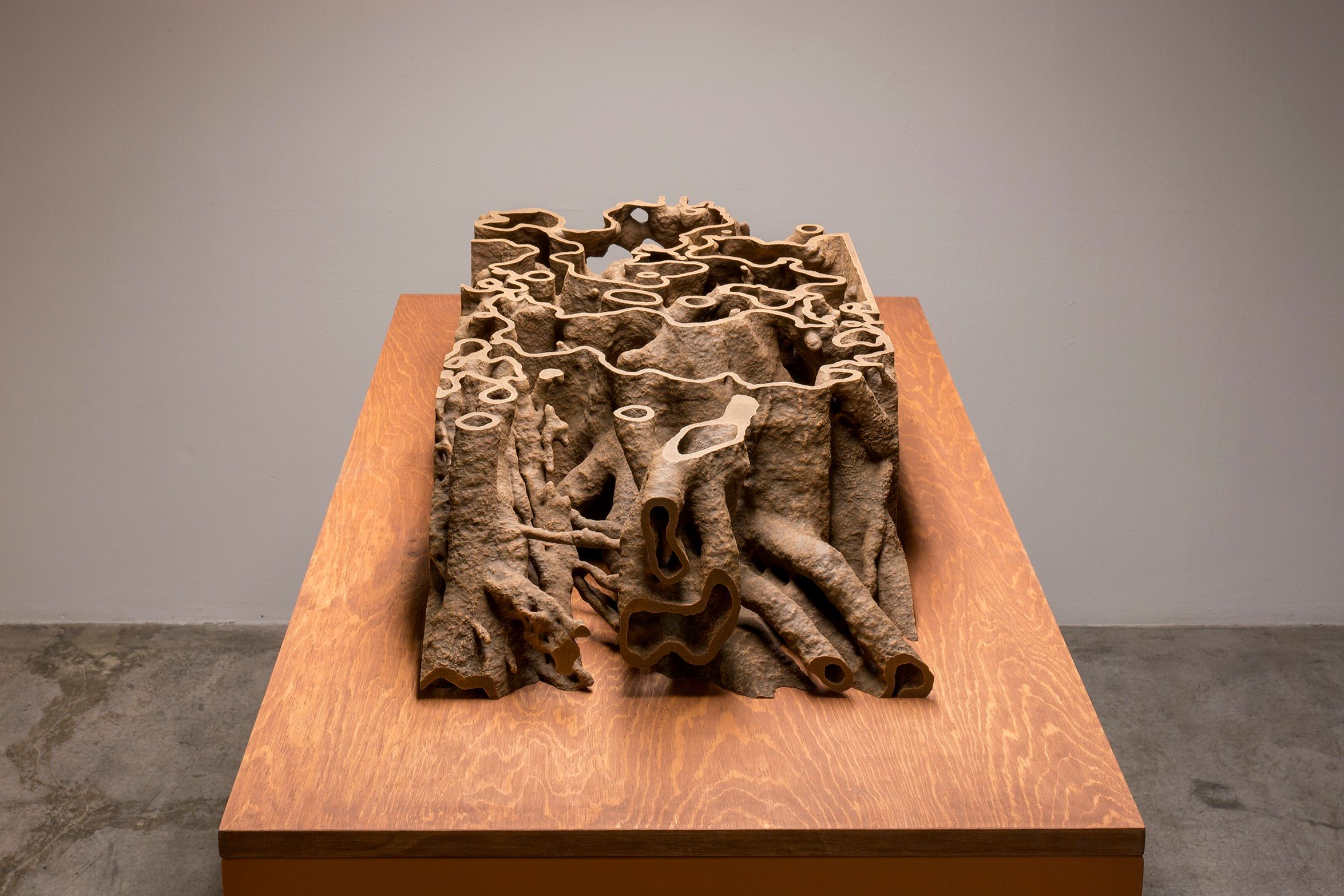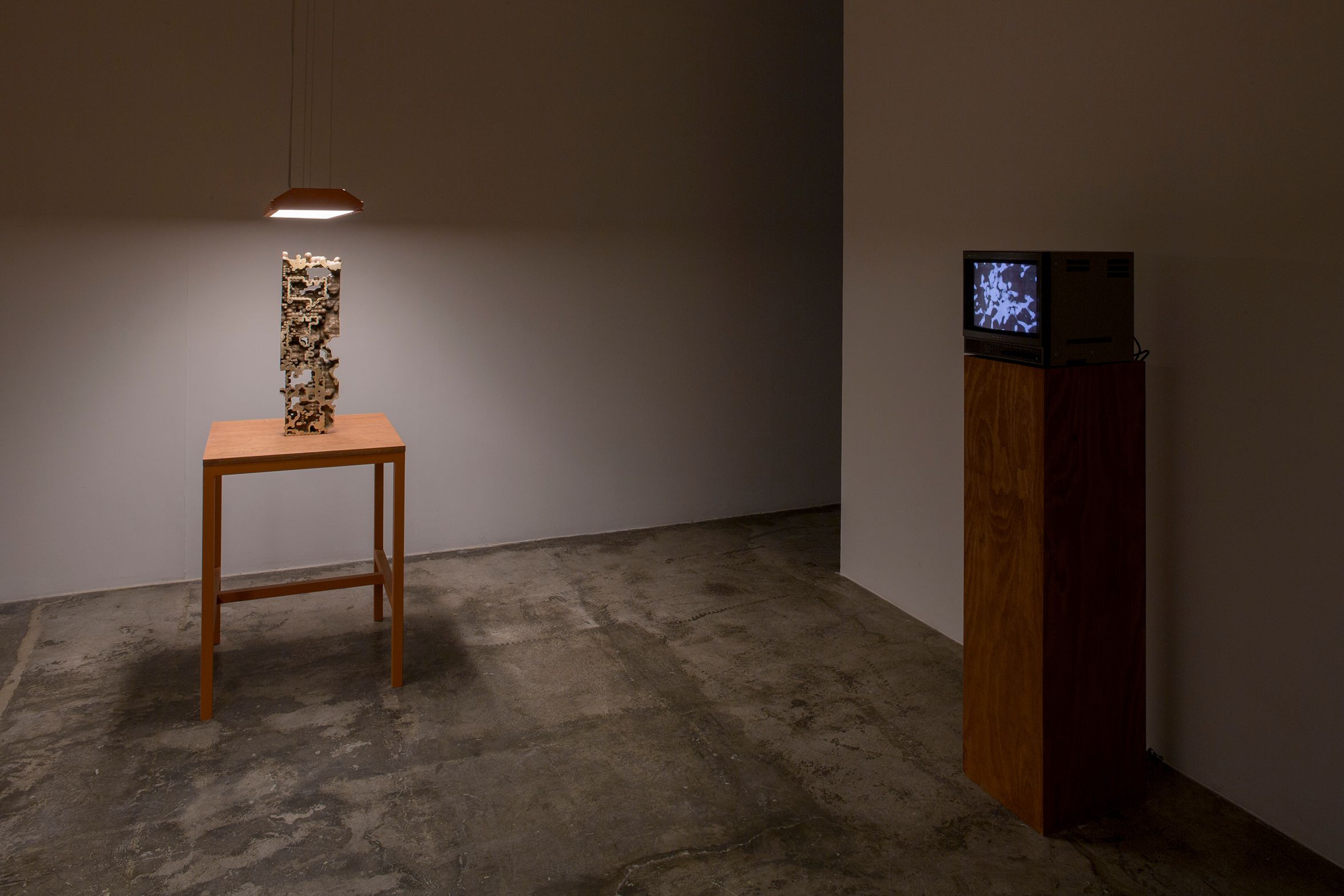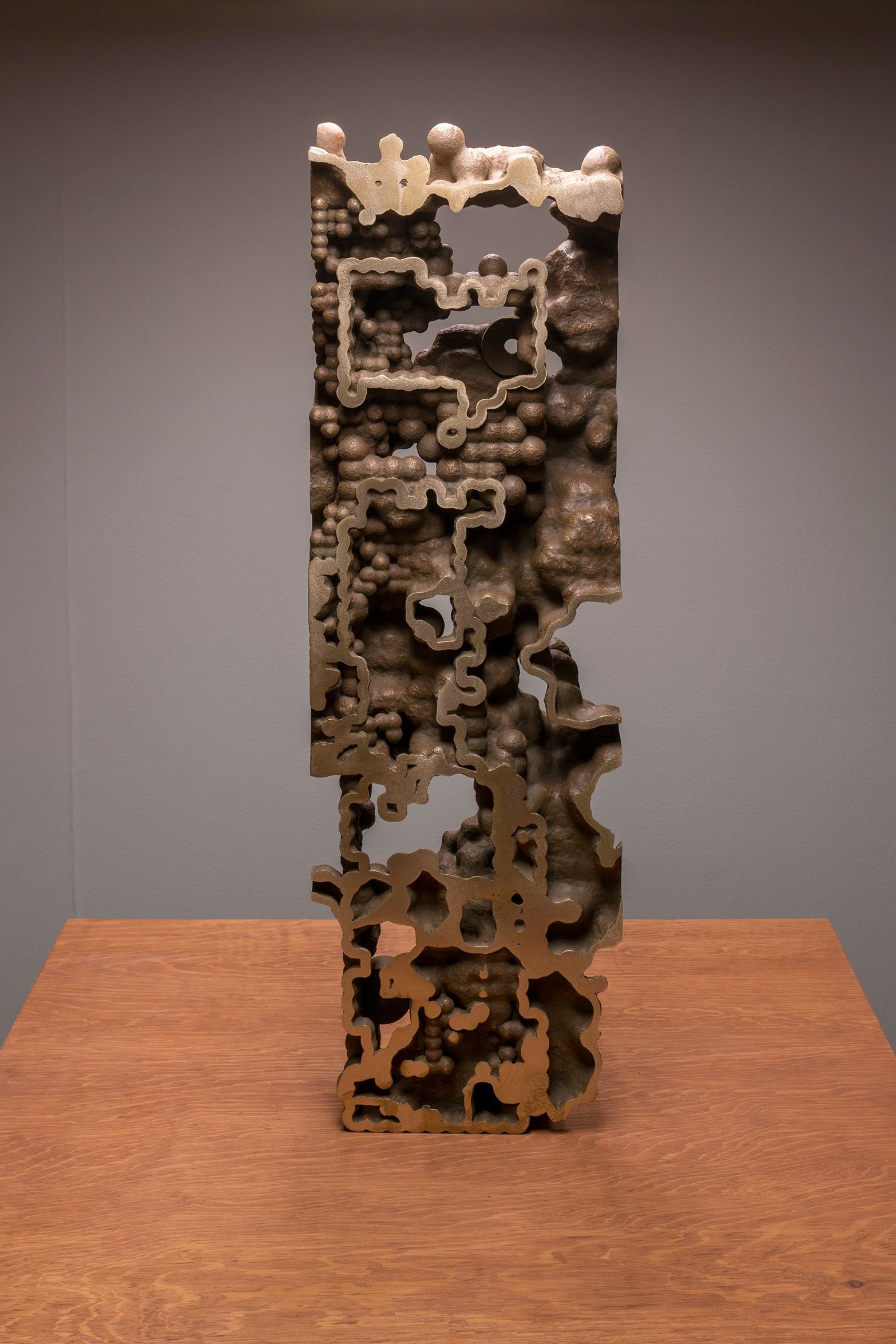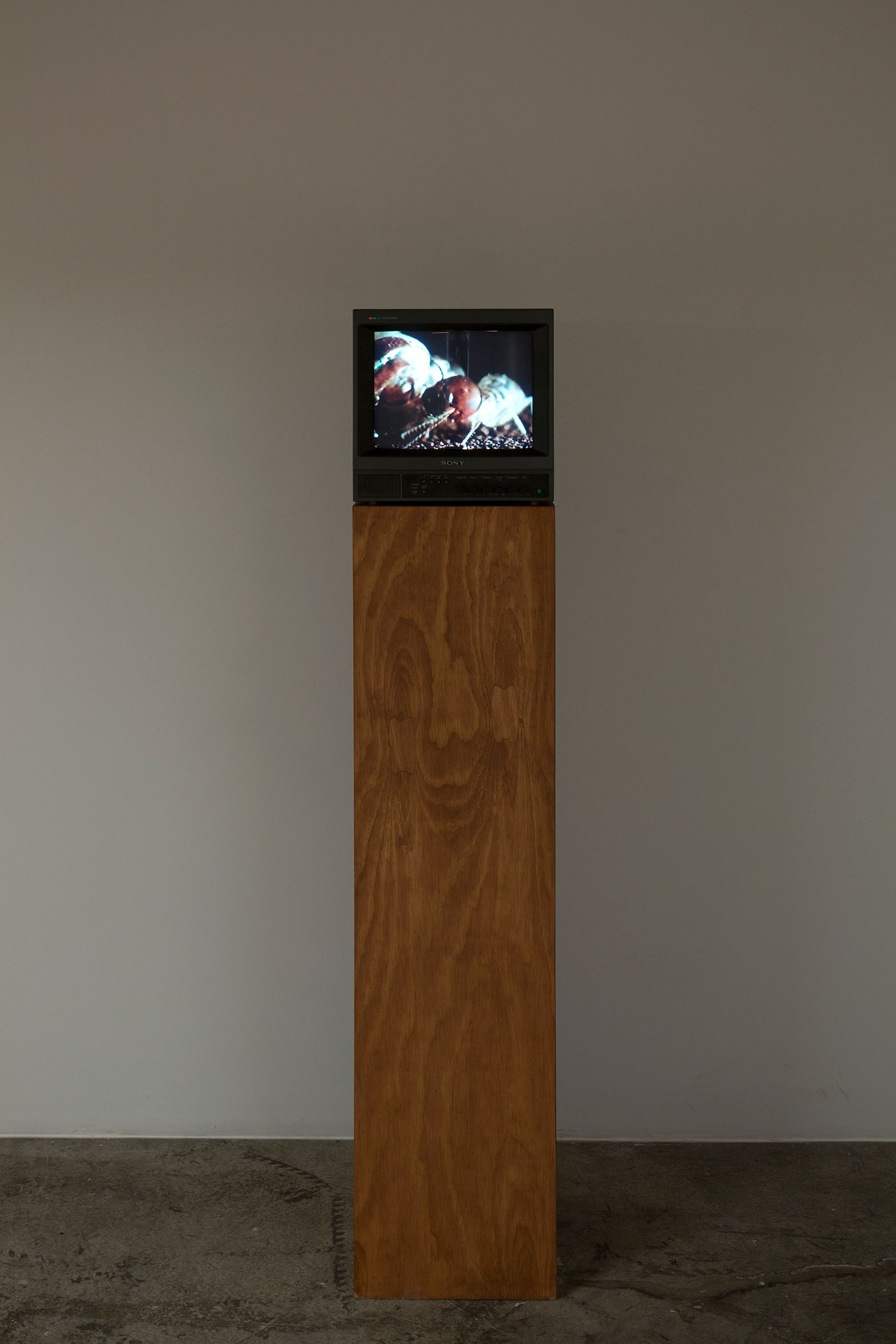LABOR presents Nicholas Mangan's most recent body of work in the exhibition, Termite Economies Phase 3, showing sculptures, videos and field recordings that were captured in Australia’s remote Northern Territory, where termite mounds proliferate. Termite Economies Phase 3 is the last iteration of a two-year project.
Nicholas Mangan's (Geelong, Victoria 1979) work draws on both recent and past history, and his research explores the unstable relationship between culture and nature to decipher narratives on the global politic economy dynamics. The study of termites begins with the artist's interest in exploring the analogy that exists between the behavior of these insects and that of humans. In Phase 1 and Phase 2, he analyzed research on sophisticated chemical termite communications, which began after the discovery of the hypothesis that termites could one day be mobilized to guide humans to gold and copper deposits. Finding a new form of exploitation of nature for economic benefit was one of the inspirations for this research project. Termite Economies Phase 3, explores how the opposite could happen: how can termite systems inform new social economies?
The termite mounds, highly receptive to their environment, are created through the accumulation of soil and saliva from the insects. Often described as superorganisms; they are built by complex ventilation tunnels that allow the flow of air that, in turn, regulates the interior temperature to sustain a multitude of worker termites and the chain of command that is constantly required to maintain the mound. The study of termite stigmergy has been appropriated in software development to conceptualize important advances such as wireless technology or Deep Learning of neural networks/machine learning.

